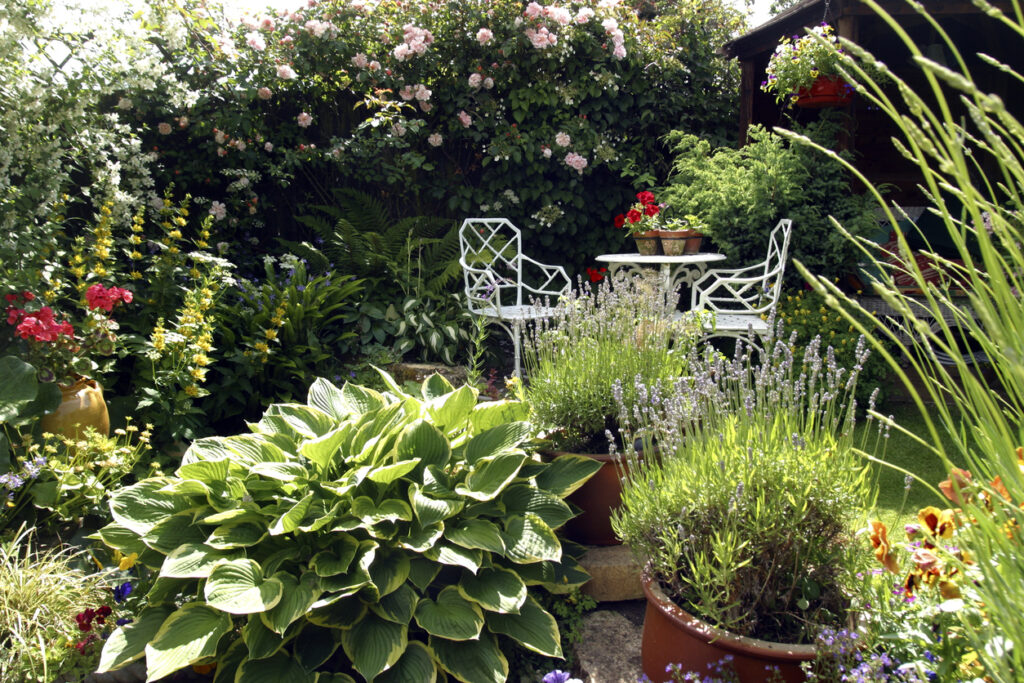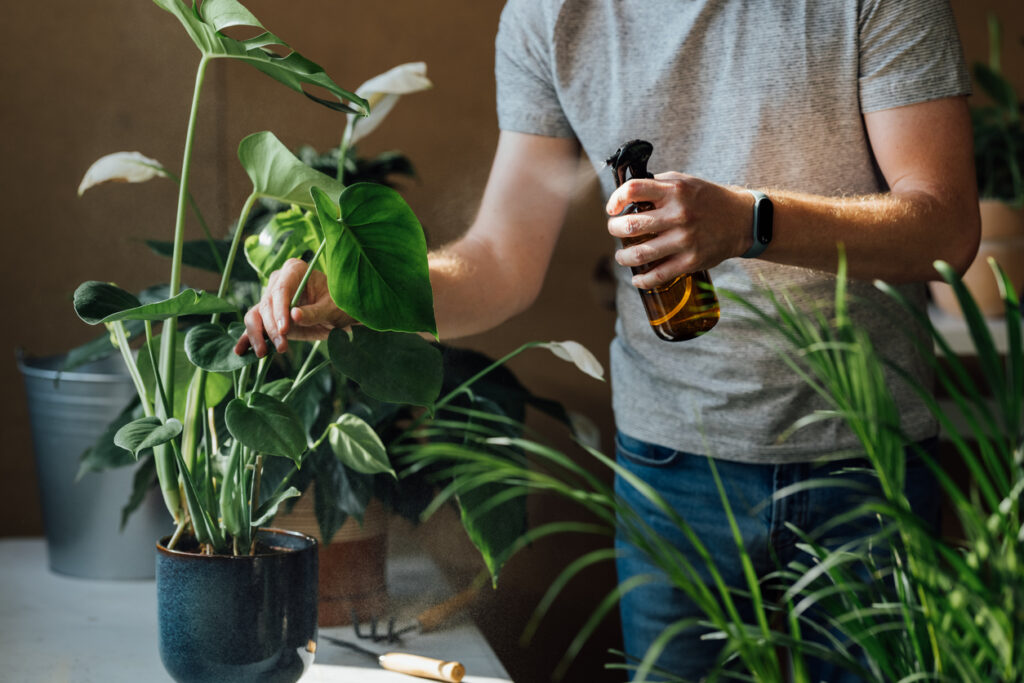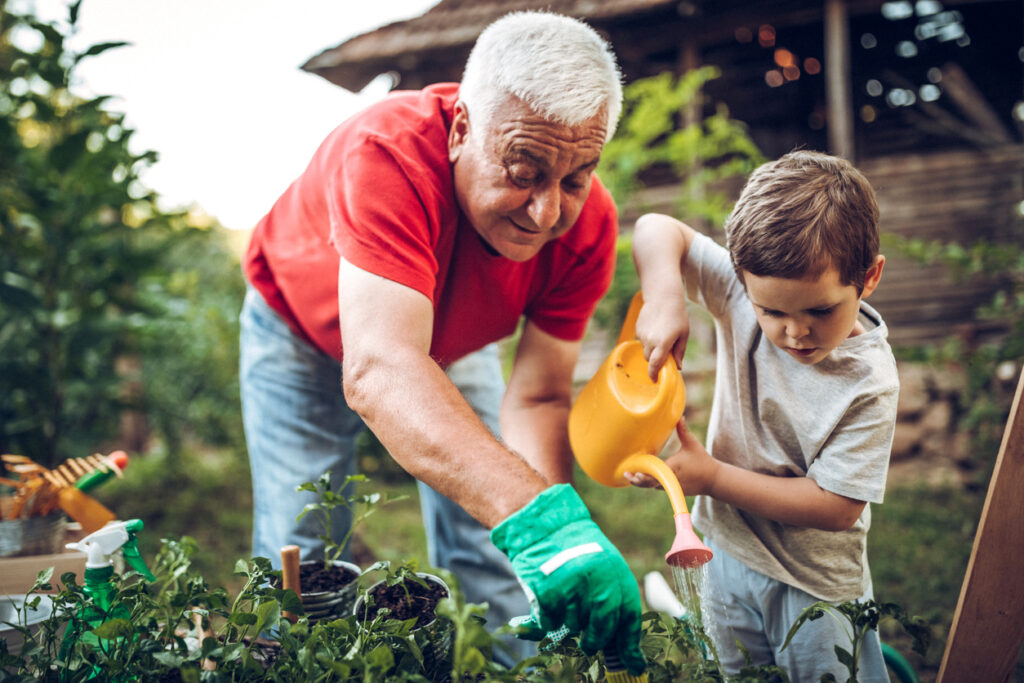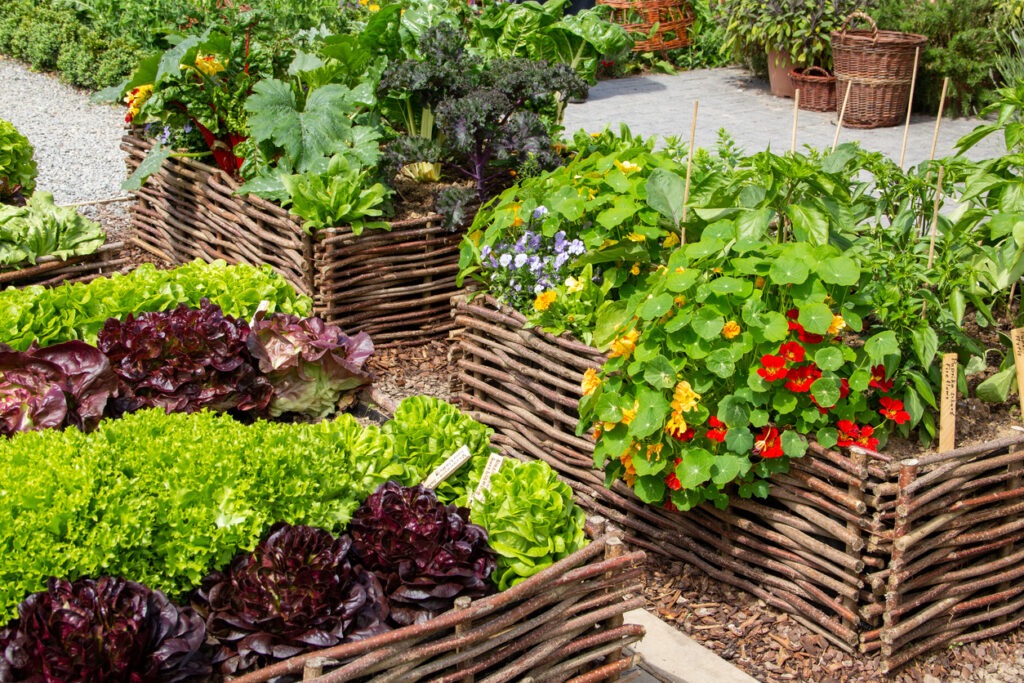Outdoor or in, there’s nothing like a touch of greenery to help create a calm and peaceful atmosphere. Even if you have limited space, a garden can be the ultimate antidote for the stresses of daily life – something we’ve certainly discovered being in our Urban Jungle at Bristol Aquarium.
So, what are the key ingredients needed to create a calm and peaceful green space at home? And what should you consider and prioritise if you have very little outdoor space available, or, indeed, no outdoor space at all?
Join us as we take a look at the joys of gardening, with top tips on creating a tranquil green space on your own patch.
Benefits of having a relaxing garden at home
If you’ve been lucky enough to explore our Urban Jungle exhibit, you may have experienced a feeling of calm serenity that only the presence of plants can bring. And that got us thinking: what are the benefits of creating a relaxing garden space in your home?
- Plants create a peaceful and pure environment: There’s something about being around plants that is innately soothing and peace-bringing. And there’s a good, science-backed reason for this too, with plants boosting oxygen levels and helping to purify the air.
- Gardening is great for our mental well-being: While the presence of plants alone is enough to boost your mood, tending to them can take that sense of well-being to a whole new level. Gardening is known to reduce stress and anxiety while improving your concentration and mood – perfect if you’ve had a tough day in front of a screen.
- Promotes exercise and wellness: Inside and out, tending to plants is a physical activity that can encourage exercise and improved wellness. Even if you only have a small space, looking after your garden is a great way to stay active and on the move.
- Grow your own food: There’s a practical benefit to creating a relaxing garden at home, too, and that’s the opportunity to grow your own grub. Whatever size your space, you can grow fruits and vegetables in even the smallest spaces.

Create a DIY indoor garden
Short on outdoor space? Not everyone is lucky enough to have a large garden, but even if you only have a couple of windowsills to play with, you can still create a green space to be proud of.
Here are our top tips on building an indoor garden at home.
Tips for keeping houseplants healthy
- Choose the right plants: Snake plants, spider plants, rubber plants, peace lilies, ferns, and English ivy are some of the best indoor plants, so think about your space and choose the right species based on things like the amount of natural light available. Also be careful to check whether plants are pet friendly as some plants are poisonous to our loyal friends.
- Don’t overwater: The majority of plants prefer being underwatered than overwatered, so take a considered approach and remember that less is often more.
- Know the signs of a sad indoor plant: Indoor plants can be finicky, so you need to know the signs that tell you when something’s up. Drooping and discoloured leaves, unusual leaf patterns, and weak stem structure are all tell-tale signs that your leafy lodgers need a little TLC.

Top tips for growing fruit and veg indoors
Fancy turning your kitchen windowsill into a personal veg patch? It’s entirely possible. Fruit and veg require very little space to get going, so a warm-ish spot is all you need to start growing your own.
Here are some top tips that could help turn your hand to a little kitchen gardening…
- Choose the best veg for indoor growth: Some fruits and vegetables cope better with the conditions inside the home than others, including lettuces, rocket, spinach, kale, carrots, radishes and tomatoes. Herbs tend to prefer being outdoors but if you can create the right conditions then they could be happy in a warm, sheltered spot.
- Ensure excellent air circulation: If there’s one thing fruits and vegetables like more than anything else it’s air circulation. As such, never overdo it by crowding plants together in a single container; they should be spaced well apart to ensure a healthy and nourishing environment.
How to create a relaxing outdoor garden
While it would be impossible to provide a comprehensive guide to creating a relaxing outdoor garden in a single article, we do have a few expert tips based on our experience of creating and tending to the unique Urban Jungle green space here at Bristol Aquarium.
What are the best plants to have outdoors?
That depends on a whole range of factors, including light, soil acidity, and overall location. Our advice is to ensure that you plan ahead with any plants you purchase, choosing varieties best suited to your outdoor space along with your gardening style.
And if in doubt, opt for hardy, year-round perennials that return year after year.

How to make the most of your garden space
Gardens don’t begin and end with plants. There are lots of things you can do to enhance your outdoor space, including:
- Ensure it provides privacy – a secluded space where you can relax and unwind.
- Add comfortable seating so that you and your family can enjoy the outdoor space to its fullest.
- Consider adding water features and wind chimes to adjust the soundscape of your garden, without compromising on the most relaxing of soundtracks: bird song.
- Thinking of adding a pond? Do your research about the species of fish best suited to your water feature, as some grow considerably larger than you might expect.
What is a botanic garden and can you build one at home?
A botanic garden is a space, often available to the public, where plants are celebrated in all their wondrous varieties. Such green spaces have been around since the time of the Ancient Egyptians, providing a place where people can connect with nature and sample the rich diversity of seasonal and native plant life.

As for the second half of that question: it is entirely possible to build a botanic garden at home, although there are a few rules to follow to set yours apart from any old run-of-the-mill garden out there.
- Design your garden for a specific purpose: Botanic gardens are usually built with a particular purpose in mind, whether that’s to showcase a specific species of plant or create the most relaxing space possible for visitors. Think about what you want your garden to achieve and the variety of plants you’ll need to realise your ambition.
- Label and catalogue your plants carefully: This is where the difference between a normal garden and a botanic garden comes to the fore. While you may have a vague idea of what is growing in a standard garden, botanic spaces require careful management, recording and labelling of all the plants on display.
- Could you open your garden to the public?: Most botanic gardens are open to the public but, of course, this isn’t possible in a private setting year-round. You can, however, volunteer to open your garden a few times a year as part of local “open gardens” events or similar. This is a great way to showcase your hard work while ensuring that everyone has the chance to enjoy the best green spaces in your local community.
We hope you’ve enjoyed this guide on creating a relaxing garden on your patch and that it’s provided ideas on what to do with your outdoor or indoor space. In need of a little further inspiration? Book your tickets to Bristol Aquarium and feast your eyes on our Urban Jungle exhibit – an unmissable space for the green-fingered among you.
